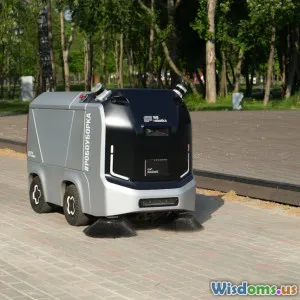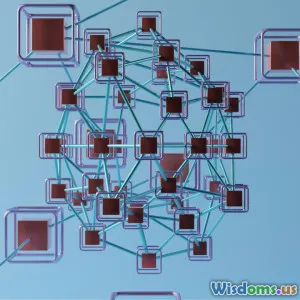
Five Surprising Ways 5G Is Transforming Vehicle Connectivity
7 min read Discover five unexpected ways 5G is revolutionizing vehicle connectivity and reshaping transportation technology. (0 Reviews)
Five Surprising Ways 5G Is Transforming Vehicle Connectivity
The digital revolution in transportation is accelerating faster than ever, thanks largely to 5G technology. While many people associate 5G primarily with faster internet on mobile phones, its impact on vehicle connectivity is proving to be far more transformative and wide-reaching. Imagine your car seamlessly communicating with traffic lights, emergency services, other vehicles, and even infrastructure in real time. This isn’t science fiction—it’s today’s reality unfolding due to 5G.
In this article, we dive deep into five surprising ways 5G is revolutionizing vehicle connectivity, reshaping how drivers, manufacturers, and cities envision the future of transportation.
1. Hyper-Responsive Vehicle-to-Everything (V2X) Communication
Traditional cellular networks have struggled with latency issues when it comes to vehicle-to-everything (V2X) communication—the technology that enables vehicles to communicate instantly with each other and nearby infrastructure. 5G drastically changes the game.
By delivering ultra-low latency connectivity (often under 10 milliseconds), 5G allows vehicles to exchange information practically in real time. This means faster hazard recognition, smoother coordination at intersections, and better reaction times to sudden road events.
Example:
In a project conducted by Qualcomm and Audi, 5G-enabled V2X communication allowed cars to instantly share emergency braking signals, reducing collision risk significantly in busy urban environments. Tests showed up to a 40% reduction in rear-end collisions.
With 5G, smart traffic lights can also communicate with cars to dynamically adjust timings based on traffic flow, reducing idling and fuel consumption in metropolitan areas.
2. Enabling Autonomous Vehicles at Scale
Autonomous vehicles (AVs) require immense data bandwidth and ultra-low latency to analyze sensor inputs, map surroundings, and coordinate with each other. Current 4G networks are insufficient for the next wave of fully autonomous fleets.
5G networks, however, provide the robust, reliable connectivity necessary for large-scale autonomous vehicle deployment. Instantaneous data exchange supports split-second decisions for AVs navigating complex environments such as busy cities or highways.
Real-World Insight:
Singapore’s Smart Mobility Master Plan leverages 5G to pilot autonomous buses in public settings, demonstrating safe and efficient rides with seamlessly connected AV fleets. These trials have recorded an 85% improvement in route optimization and safety awareness due to real-time communication.
3. Enhanced In-Car Entertainment and Infotainment Systems
5G is transforming the in-car experience by enabling high-definition streaming, augmented reality navigation, and real-time updates without buffering or latency issues that have plagued 4G streaming.
Passengers can now enjoy live 4K video, cloud-based gaming, and interactive voice assistants powered by AI—all accessible from the backseat. This creates incredible value for rideshare companies and consumers alike.
Data Point:
Cisco predicts that by 2025, video traffic in vehicles will represent 60% of all in-vehicle data traffic, largely enabled by 5G capabilities. Auto manufacturers like BMW and Mercedes-Benz have already introduced 5G-enabled infotainment modules capable of multi-gigabit speeds.
4. Real-Time Vehicle Diagnostics and Predictive Maintenance
The connectivity brought by 5G enables vehicles to communicate detailed performance data with manufacturers and service providers instantly. Analysis on centralized cloud platforms can detect potential faults before they become critical, allowing for predictive maintenance rather than reactive repairs.
Example:
Volvo’s partnership with Ericsson brings 5G to bear in advancing vehicle health monitoring. By continuously streaming engine diagnostics, battery status, and tire conditions, Volvo vehicles notify drivers and service centers about issues such as coolant leaks or brake wear before they cause breakdowns.
This predictive model reduces downtime and enhances passenger safety.
5. Smarter Traffic Management Through Edge Computing
One less obvious effect of 5G on vehicle connectivity is its support for edge computing, which places data processing closer to the source instead of relying on distant data centers.
By processing vehicle data at the edge—be it traffic signals, road sensors, or local cloud nodes—5G networks empower smarter traffic management, reducing congestion and improving overall transportation efficiency.
Insight:
Los Angeles has deployed 5G-connected traffic lights integrated with AI to adjust signal timing dynamically. Early results show 16% less idle time at lights and 12% reductions in local air pollution due to fewer emissions.
Edge computing also enables highly localized hazard warnings—for example, alerting drivers about a pothole just ahead or a sudden road closure within seconds, improving safety on the spot.
Conclusion: Driving Toward a 5G-Connected Transport Future
The shift to 5G goes beyond just a faster mobile internet in our pockets; it is fundamentally redefining vehicle connectivity and the entire transportation ecosystem. From lightning-quick V2X communication to scalable autonomous fleets, smarter traffic management, immersive in-car experiences, and predictive maintenance, 5G is accelerating the evolution of cars from isolated machines to integrated nodes in a vast, intelligent network.
As cities, manufacturers, and telecom providers continue innovating with this technology, drivers and passengers stand to gain unprecedented levels of safety, efficiency, and convenience. Embracing 5G-powered vehicle connectivity today could well be the key to unlocking smarter, more sustainable transportation tomorrow.
Are you ready for the 5G vehicle revolution? The road ahead is already powering up.
Rate the Post
User Reviews
Popular Posts





















